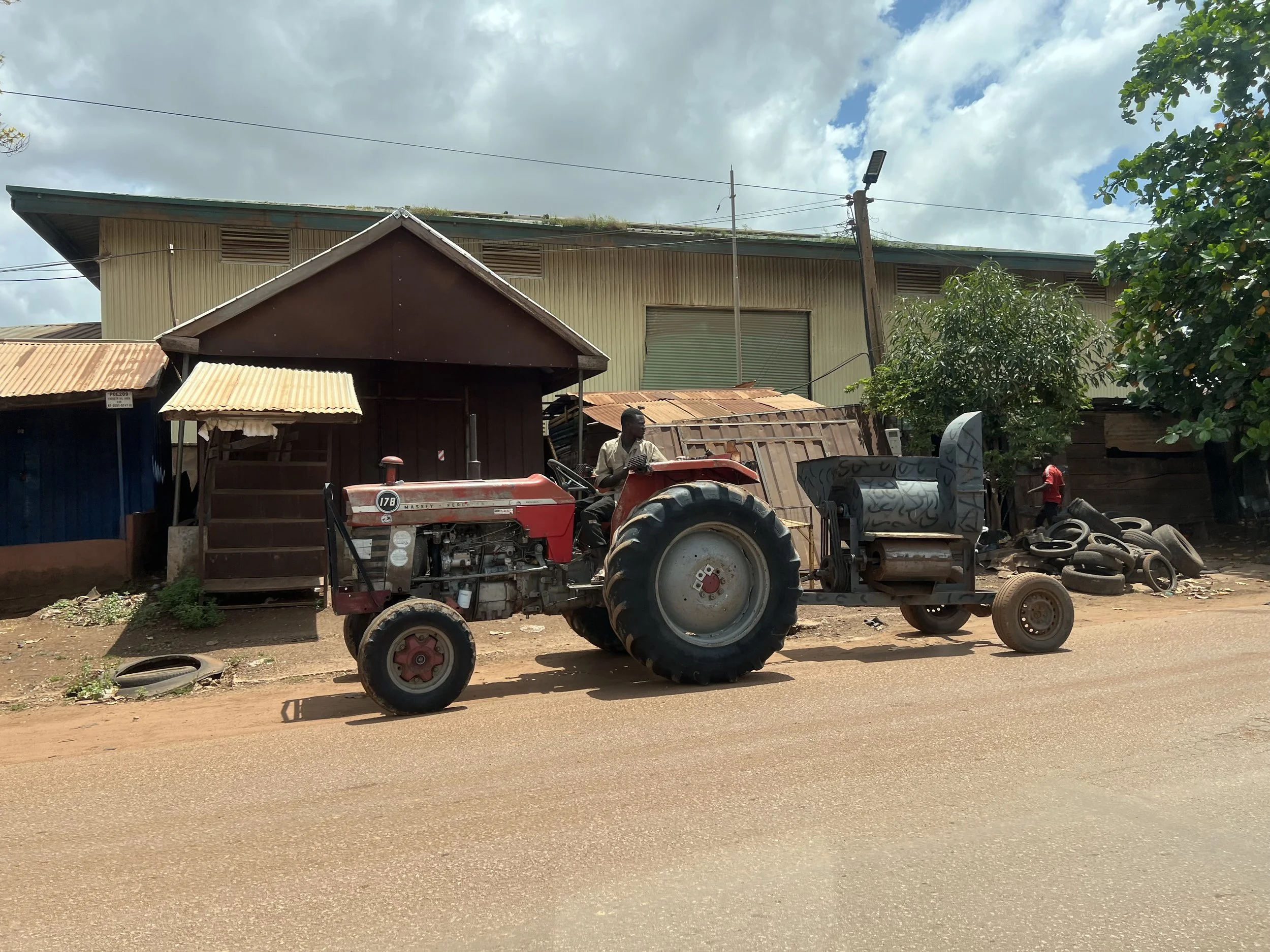Fighting Climate Change with One Hand Tied: Women Farmers in Northern Ghana
Last week, I found myself sitting with groups of women and men farmers in four communities around Tamale, listening to stories that would fundamentally shift how I think about climate-smart agriculture. Over three days of conversations with farmers across northern Ghana, one truth became impossible to ignore: we're asking women to fight climate change without giving them the tools to do so.
Why I Was There
I traveled to northern Ghana to explore how Sinapi Aba Savings and Loans could better support 15,000 women smallholder farmers with a climate-smart approach, in a new program. Women are recognized as key actors in the fight against climate change, yet they continue to face enormous challenges accessing capital, technical skills, and markets. The gap between their potential impact and their actual resources is staggering.
The Decision-Making Divide
What struck me most powerfully during my conversations was the stark difference in decision-making power between men and women in these rural communities. The spectrum was sobering.
At one end, I met women who couldn't buy clothes for themselves or their children without their husband's permission. Every decision, no matter how small, required approval. In the most "progressive" community I visited, men who had participated in government-sponsored gender training could rattle off exactly what they felt their wives needed: technical skills, cash, tractor service time, improved seeds, bags. They didn't hesitate for a second. But here's what troubled me—men were able to clearly list what they needed unprompted; women had a harder time formulating their needs.
The Mechanization Gap
As I drove between Tamale and Yendi, I passed multiple tractor and agricultural machinery dealers along the road. Mechanization saves time and reduces backbreaking physical labor—it's transformative for farming communities, and especially for women whose time is burden by unpaid care work. Access isn't equal. Even when tractor time is rolled into an ag loan product, women still struggle to secure it, especially once men begin using the equipment. I listened as women shared how they pool their resources to rent "motorkings"—motorbike-powered flatbeds—to transport their goods to market or to agricultural processors they work with. They're finding creative solutions, but they're working twice as hard for half the access.
Tractor on the road to Tamale
The Land Question
Perhaps the most fundamental barrier is still land itself. Village authorities control land allocation, and the system overwhelmingly favors men. In the best-case scenario, women can negotiate for a small plot—averaging just two acres. This land often comes from their husband's allocation or is cobbled together from other villagers if their husbands refuse to share. Women usually farm the same crops as their husbands (who give them advice): maize, groundnuts, soybeans and also maintain small vegetable gardens, for the family’s needs and selling the surplus on local markets.
A Path Forward
Despite these challenges, I left Ghana energized by the resilience and resourcefulness I witnessed. Women are already organizing themselves in Village Savings and Loans, pooling resources, and finding innovative solutions to barriers that would stop many in their tracks. They are ambitious, and want to be successful and make their own decision.
True empowerment means putting decision-making power directly in women's hands. It means women choosing their own technical training priorities, controlling their own capital, negotiating their own tractor service schedules, and securing land titles and putting other assets in their own names. When women have agency over their farming activities, entire communities thrive. Their children stay in school longer, nutrition improves, and climate-smart practices spread organically through women's networks.
The opportunity here isn't just about closing gaps—it's about recognizing that women farmers are already agents of change who have been systematically held back. When we remove those barriers and center women's voices in every decision, we don't just help individual farmers. We transform agricultural systems and accelerate the fight against climate change through the leadership of those who understand and protect the land, the climate, and their communities best.
The question isn't whether women can lead this transformation. They already are. The question is whether they will finally have the the resources to do it at scale and be successful.

